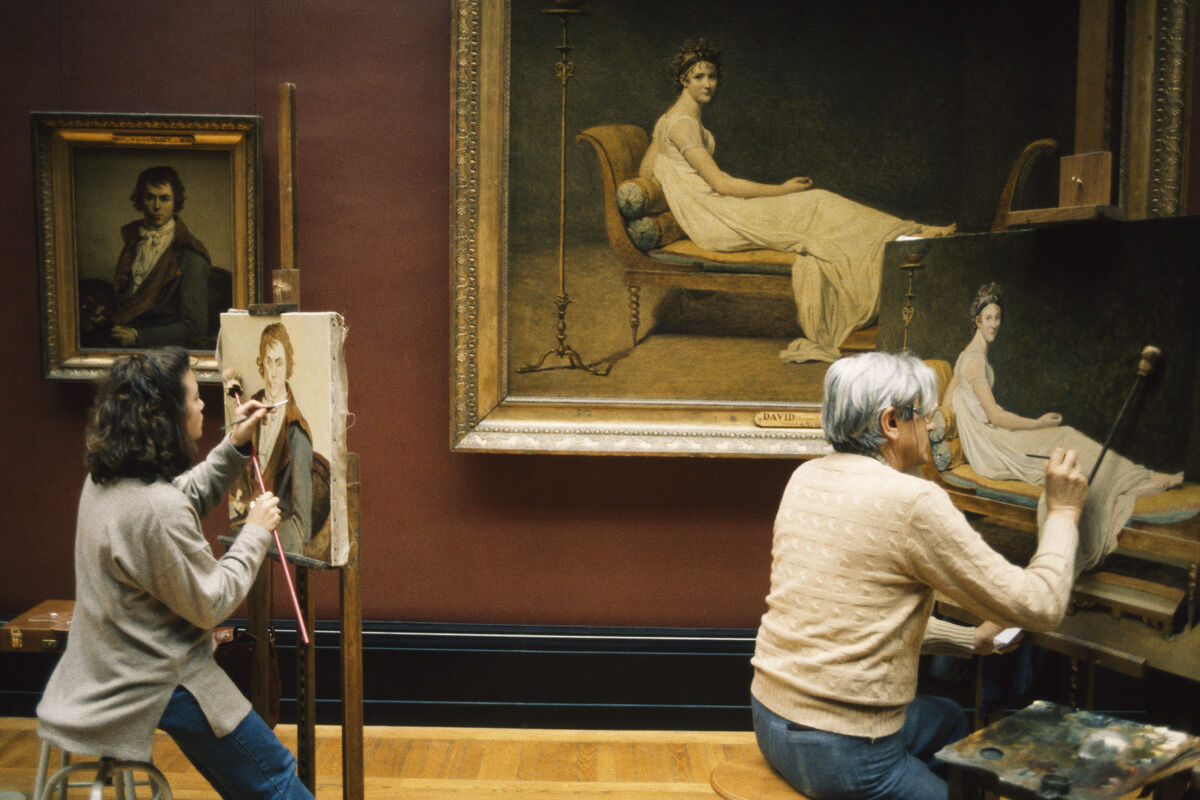Creativity
Copying Other People’s Art Can Boost Creativity, Study Finds

Photo by Alain Lecocq/Sygma/Sygma via Getty Images.
Creativity and copying appear to be polar opposites. Whereas creativity requires originality, free thinking, and new ideas, copying is just, well, copying. It seems unlikely then that there would be a link between replicating another artist’s work and being able to create new, novel work of your own. However, Kentaro Ishibashi and Takeshi Okada, an architect and a professor at the University of Tokyo in Japan respectively, have been researching this topic for several years, and they found that copying may help facilitate artistic creativity.
The Study
In one experiment, the researchers recruited 30 university students for a three-day study, and broke them up into groups. One group, the control group, was asked to draw an original artwork each day and were provided with one object to use as a subject—like a cocktail glass, a shell, or a potted plant.
The second group was also instructed to create an original drawing of a banal real-world object on the first day. On the second day, however, they were presented with an image of an abstract artwork by an artist and asked to “copy the picture onto a blank piece of paper while imagining the painter’s intention.” Then, on the third day, the participants produced their own original piece, again based on a real object.
Two professional artists then evaluated the artworks produced by both groups, assigning them scores from one to five across three criteria meant to assess creativity: aesthetic attractiveness, originality, and technical skill. (The professionals were able to review all of the works before they began assigning scores.)
What They Found
The works created by the group that had copied other artists were rated as more creative than those created by the group that hadn’t copied. Participants who hadn’t copied the work of an artist produced more realistic drawings on the third day, while those that had copied created pieces that exhibited more experimentation. Notably, their works did not simply echo the work that was copied, but reflected their own personal style, suggesting that the act of copying led to broader sense of artistic freedom among participants.
“I suspected that copying might have some creative effect,” Okada wrote in an email. “[But] we did not expect that imitation is actually useful for generation of creative ideas with this magnitude.”
The originality of the students’ work adds nuance to what is known as the conformity effect, noted Thomas Ward in Psychology Today. Broadly, the effect means that people change their work to fit in with a group in ways that can reduce novel thinking. Okada and Ishibashi’s research found, however, that in certain circumstances, asking people to copy examples of others can ultimately result in more creative works, rather than providing them with little to go on.
What It Means
The increased creativity is not really a product of the copying per se, Okada told me. Instead, it’s about being pushed beyond the familiar (of course, what constitutes “familiar” in art is different for a professional artist immersed in contemporary art than your average undergraduate, he noted).
Those in the control group were simply drawing objects that were in the room, and some even reported that they didn’t think they could create a satisfactory drawing if they attempted to be original. Their imagination was constrained by a lack of exposure to other possibilities. In contrast, those who copied abstract work understood that their art didn’t have to adhere to realism, and thus they produced more varied and interpretive works.
Another explanation for the relationship between copying and creativity, as revealed by a post-test questionnaire, is that copying work forced participants to consider the form and style of the artist, as well as their own. Copying pushed participants to compare their own style to someone else’s and allowed them to think through aspects of their own drawings that they might not have otherwise questioned or considered. “Good” copying is not simply about getting the line and form correct, but questioning why an artist worked a certain way, what they were thinking. Ultimately, this exercise generated new ideas.
Other experiments conducted by Okada and Ishibashi have found that intense contemplation of an artwork could produce similar creative effects, even without copying. Merely developing a new style of drawing without an example, however, did not correlate with creativity. “Creativity is not about thinking something in your mind by yourself,” Okada said. “Creativity occurs when you encounter something.”
Isaac Kaplan is an Associate Editor at Artsy.
Correction: A previous version of this article misidentified the professional affiliations of Takeshi Okada and Kentaro Ishibashi. The article has since been corrected.

No comments:
Post a Comment